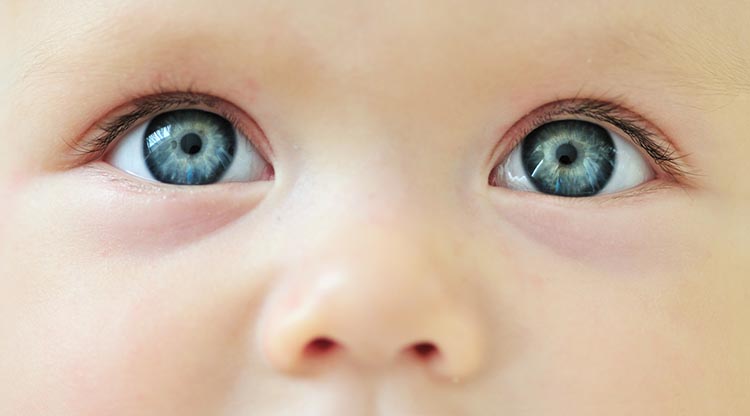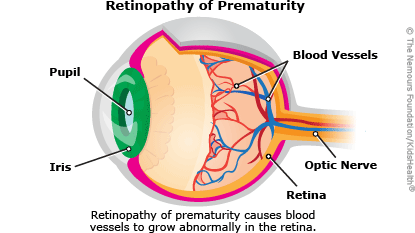When your infant is born prematurely, the joy of having a baby can be tempered by anxiety. Doctors may give you a long list of possible complications that come with an early birth, and it can be overwhelming to consider the ramifications of each. When Retinopathy of Prematurity (ROP) appears on the list, many new parents are alarmed. The condition isn’t well-known, and families wonder if their child will struggle with a lifetime of vision issues. Fortunately, an ROP diagnosis doesn’t necessarily mean complete loss of eyesight.
Is ROP a Common Eye Problem?
The first thing to know about ROP is that it is not particularly common. It primarily affects infants born before the 31st week of pregnancy, weighing 2.75 pounds or less. Of the 28,000 babies born in the US under these circumstances each year, just over half are impacted by ROP, and 90 percent of the children diagnosed with ROP have such mild cases that they need very little in terms of specialized eye care. Only about 1,500 premature babies develop ROP that is severe enough to require treatment each year, and of these, up to 600 become legally blind as the disease progresses.
What Is ROP?
At the very back of the eye, there is a layer of tissue that performs several functions critical to vision. This layer, called the retina, contains cells that are sensitive to light. These cells receive the focused light that comes through the lens of the eye. The retina then sends messages about the light through the optic nerve to the brain, which then forms an image.
Retinopathy of Prematurity happens when the tiny blood vessels in and around the retina grow abnormally. They are quite fragile, making them prone to leaks. When the tiny blood vessels leak, the retina can be scarred, which – in unusual cases – pulls it out of position. In the most severe situations, the retina detaches altogether, causing vision problems and blindness. The condition is also sometimes referred to Terry syndrome, and was previously known as retrolental fibroplasia (RLF).
What Causes ROP?
Retinopathy of Prematurity was first diagnosed in the early 1940s, and there was a large group of premature babies who lost their vision to the condition in the late 1940s and early 1950s. At the time, physicians used high levels of oxygen in the care of premature infants. This specific risk factor has been addressed, and neonatal intensive care units have found a balance between supplying enough oxygen without risking the child’s vision. This has reduced the number of babies impacted by ROP, though other risk factors have not yet been completely eliminated. These include respiratory distress, blood transfusions, anemia and breathing difficulties in premature infants.

What Are the Stages of ROP?
The likelihood of vision problems increases depending on the severity of your baby’s ROP. Each case is categorized into one of the following stages, ranging from mild to serious:
- Stage I – Slight abnormal blood vessel growth is noted. This often improves without treatment, and there is no impact to vision.
- Stage II – Moderate abnormal blood vessel growth is noted. Again, this often improves without treatment, and there is no impact to vision.
- Stage III – Severely abnormal blood vessel growth is noted. While these cases can occasionally resolve without treatment, most eye care professionals recommend intervention to prevent retinal detachment. The outcome is often positive.
- Stage IV – The retina has partially detached due to scarring. Treatment is critical to preserving vision.
- Stage V – The retina has completely detached due to scarring. With or without treatment, blindness is a strong possibility.
Advances in ROP diagnosis and treatment have dramatically reduced the likelihood that ROP will cause permanent damage to your infant’s vision. With proper eye care, the progression of the disease can be stopped altogether.
